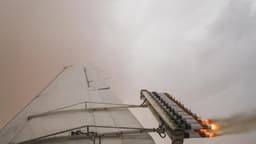Home / Environment / Delhi's Pollution Tracking Model Runs on Outdated Data, Accuracy Concerns Raised
Delhi's Pollution Tracking Model Runs on Outdated Data, Accuracy Concerns Raised
5 Oct
Summary
- Delhi's only operational pollution-tracking model runs on 2021 emissions data
- Model shows transport as largest contributor, but data limitations raise accuracy concerns
- New emissions inventory under preparation to improve forecasts
As Delhi braces for its annual winter pollution crisis, the city's only operational pollution-tracking model, the Decision Support System (DSS), has been reactivated to estimate the daily contribution of various pollution sources. However, officials have acknowledged that the system, run by the Indian Institute of Tropical Meteorology (IITM) in Pune, still operates on an outdated 2021 emissions inventory, which raises concerns over the accuracy of its forecasts.
The DSS is currently the sole system providing estimates of how much Delhi's air pollution comes from local sources, such as transport, dust, and industries, as well as from external regions like crop-burning in neighboring states. This follows the Delhi government's decision last winter to halt its own real-time source apportionment study, leaving a crucial data gap in the city's anti-pollution planning.
According to the DSS's first readings on Sunday, stubble burning has not yet contributed to Delhi's PM2.5 levels this season, even though farm fires have begun in the northern plains. The model shows transport emissions as the single largest source, accounting for 18% of the city's particulate matter load on Sunday. The next biggest contributors were pollution from Gautam Buddha Nagar (14%) and Bulandshahr (9%).
Officials have acknowledged the system's limitations, stating that a new emissions inventory is under preparation and will be incorporated as soon as it is ready, which they believe will make the forecasts more reliable and region-specific. Until then, the DSS will continue to operate with the outdated data, potentially compromising the accuracy of its predictions.




